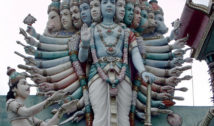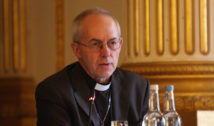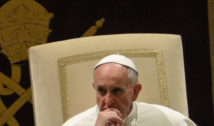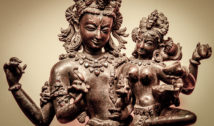
Did Wealth Create Modern Religion?
- By Alison Lesley --
- 13 Jan 2015 --

A new study indicates a correlation between wealth and religion.
A study published in the research journal Current Biology on December 11, 2014 has hinted toward new findings regarding wealth in the history of religion. The study used statistical models based on both history and psychology to find a reason why the world’s primary religious traditions rose around the same time in three separate regions. Four researchers got together and looked at the traditions of Hinduism, Judaism, Christianity, Islam, and Buddhism, and how they factored in “morality and personal transcendence,” or the ideal that our existence has a higher purpose than materialistic success. According to Richard Soss, an anthropologist studying the evolution of religion at the University of Connecticut, the study is “by far the most significant advance I’ve seen in a long time.”
New in CB! Ascetic and moralizing religions arose when societies became affluent http://t.co/yy4GrdqvXb
— Current Biology (@CurrentBiology) December 11, 2014
Wealth and the Shift from the Old to the New
The ancient religions had gods who weren’t exactly moral, such as the Greek and Roman gods, the Egyptians, Aztecs, and Mayans. Many have puzzled over the move from ritualistic religion to religion that aimed to pass on traits like self-discipline, asceticism, and restraint. The change occurred roughly between 500 B.C.E. and 300 B.C.E, appearing across Eurasia, from Greece to China. These new religions spread across the globe, and the time period was titled “The Axial Age” by Karl Jaspers, a German philosopher.
Psychologists found that when people have fewer resources, they prioritize their needs in the here and now, rather than looking toward the future. However, once people gained more wealth, they started to forgo instant rewards for future ones. The researchers dubbed this measurement as “energy capture,” or the amount of calories that are available as food and other valuable resources per day for each person in a society. The more resources a region had, the more likely it was to value more altruistic traits.
“One implication,” says Nicolas Baumard of the Ecole Normale Superieure in Paris, “is that the world’s religions and secular spiritualties probably share more than we think. Beyond very different doctrines, they probably all tap into the same rewards system.” During the Axial Age, doctrines began to “emphasize the value of personal transcendence,” encouraging worshipers to control their materialistic desires for wealth through moderation and compassion.
Some are Skeptical about these Findings
Edward Slingerland, a historian studying the religions of Ancient China at the University of British Columbia in Vancouver, Canada, felt the hypothesis was “interesting.” However, he says that the authors drew from “outdated ideas.” “In early China, a lot of the moralizing stuff is arguably earlier than that,” while the Arabian Peninsula didn’t have it appear until the 7th century C.E. He gears toward a theory that focuses more on the size and complexity of a given society, “as people find themselves needing to cooperate with more and more strangers, beliefs in a high god encouraging morality helps smooth those new interactions and contributes to the overall success of the culture.”
Either way, these new findings can aid in paving the way for researchers to test other characteristics of modern human society, and determine if they stem from a similar historical change.


















